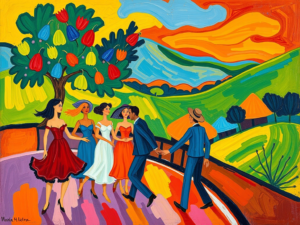The Fauves: A Bold Revolution in Art
The Fauves were a revolutionary group of early 20th-century artists led by Henri Matisse and André Derain. They challenged traditional artistic conventions with bold colors and simplified forms, emphasizing emotional expression over realism. Though short-lived, the Fauvist movement significantly influenced modern art, paving the way for styles like Expressionism and Cubism.

 Welcome to the vibrant and revolutionary world of Fauvism, one of the most electrifying painting styles and movements of the early 20th century.
Welcome to the vibrant and revolutionary world of Fauvism, one of the most electrifying painting styles and movements of the early 20th century. 